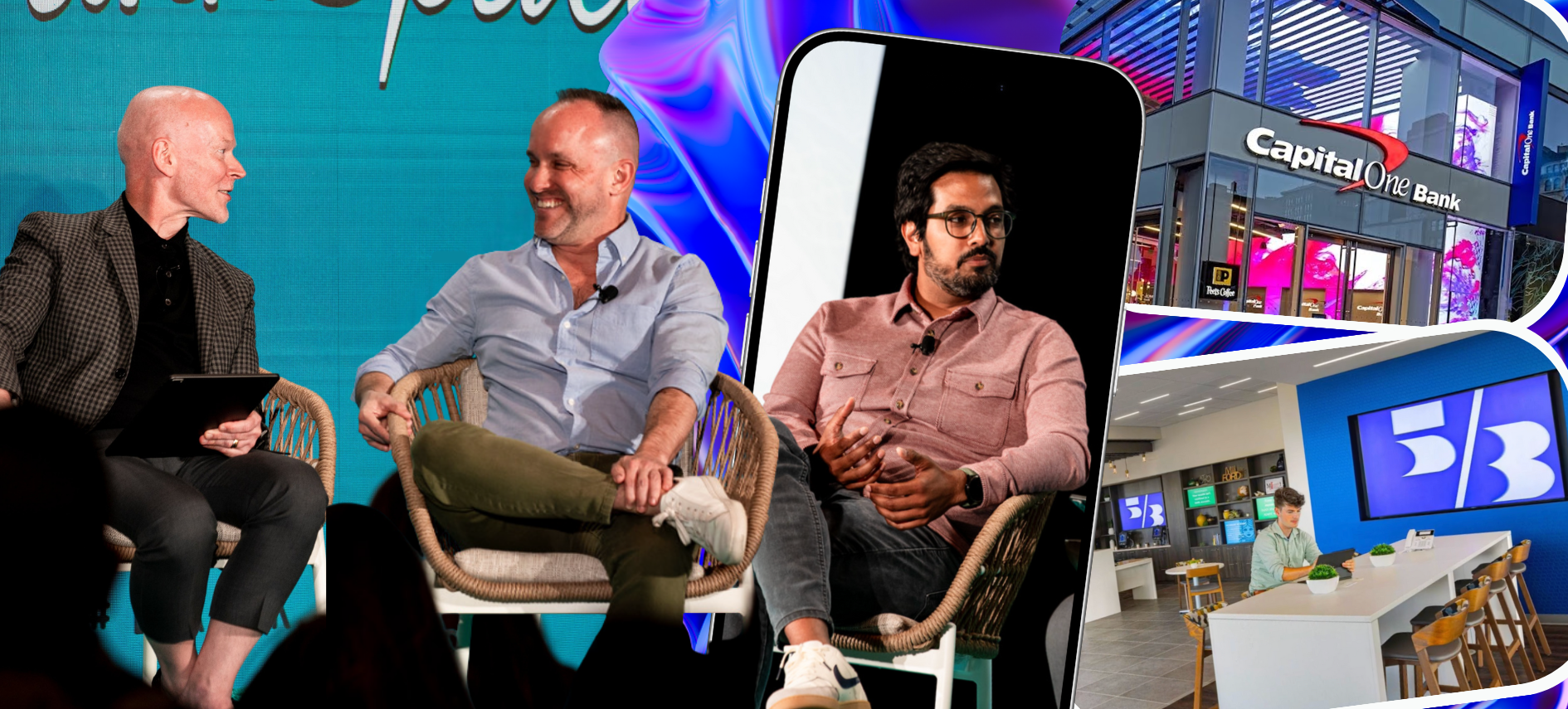At BankSpaces 2025, retail banking design leaders from a few of the nation’s largest super-regional banks discussed a fundamental question: In an age of digital banking dominance, what role do physical branches play?
The answer, according to panelists from Capital One and Fifth Third Bank, isn't about survival; it's about transformation into something entirely new, creating spaces where clients are appreciated and their financial needs are efficiently attended to.
Ray Ehscheid, SVP, National Practice Leader for Retail at Nelson Worldwide, moderated this discussion with Matt Bosserman, VP of Retail Design at Capital One, and Vikas Srivastava, VP and Design Lead at Fifth Third Bank, on the future of branch design and customer experience.
The Security Blanket Effect
Srivastava opened with a striking observation about what U.S. branches do exceptionally well: providing a customer security that their money is beig taken care of – and they are, too.
"What we're doing really well is providing a sense of security for people that their money is within 15 minutes of their house," he said. This contrasts sharply with international banking markets, where branch networks are shrinking rapidly.
This variable of security extends beyond individual comfort to community impact. "When the bank goes into a new community, it uplifts it," Srivastava said, highlighting how financial institutions become anchor points that help communities thrive through access to capital, resources, and advice.
The Community Connection Revolution
Both Capital One and Fifth Third have embraced community engagement as a core differentiator, but their approaches differ. Capital One's cafe model has evolved far beyond the original ING Direct concept of baristas providing financial advice.
Today, their spaces serve as genuine community hubs, spaces where local nonprofit organizations can host meetings and events.
"Community is fundamental," Bosserman said, adding that successful community engagement starts with real estate strategy—choosing locations that are genuinely accessible and welcoming to the community they’re in. Their recent Bronx location opening featured five local nonprofits, and the new branch is staffed by ambassadors who were born and raised in that borough.
Fifth Third took on a more artistic approach to community activation at its new West End Charlotte, NC, branch. They partnered with local schools and muralists to create building-covering murals that students helped design.
"Now they've got an art piece that they can take on and call their own," Srivastava said.
Brand Evolution + Empathetic Design
Perhaps the most intriguing part of the discussion centered on how banking brands might evolve beyond traditional financial services. Ehscheid envisions a future where banks follow the Mercedes and Porsche model—expanding into lifestyle brands that offer hotels, experiences, and comprehensive lifestyle services.
"I think about American Express as that key financial institution that really is a lifestyle brand," he said. "It's not about the money, it's about having the card, it's about being a part of that community."
Capital One is already exploring this territory through their airport lounge network, creating what Bosserman calls "a consistency of brand voice throughout every place our customers interact with us." The challenge is making spaces feel distinct while maintaining brand coherence.
Srivastava and Bosserman both emphasized the importance of inclusive design, particularly for neurodivergent customers and those with anxiety about public spaces.
Srivastava noted that "Some people have anxiety about being in public spaces," leading Fifth Third to consider features like dimmed lighting and reduced noise levels on certain days, similar to sensory-friendly hours in some other retail environments.
The Technology Balance
Despite the digital revolution taking place in retail banking, both organizations maintain that physical spaces shouldn't push customers back to digital platforms.
"We're not going to be like 'Oh well, get back on that computer,'" Srivastava said. "We're going to try to solve that in person, with that person."
This philosophy extends to digital displays and interactive technology within branches. Bosserman cautioned against "washing an entire building in digital screens," arguing that "more is often less" and becomes unnecessary noise to customers.
Looking Ahead: Renovation vs. Reinvention
All panelists agreed that renovation and reinvention are highly integrated processes. Banks must constantly evolve while managing extensive legacy networks, often implementing changes that customers might not immediately notice but dramatically improve backend processes.
The future promises even more sophisticated personalization through AI, allowing branches to provide better recommendations based on customers' digital behavior before they arrive. As a result, Srivastava noted, "That interaction is going to be so much better going forward."
While regulatory constraints and product similarities create challenges, forward-thinking banks are transforming branches from transactional spaces into community anchors that build lasting relationships and brand loyalty.
The question isn't whether branches have a future — they for sure do – it's what kind of future they'll create for your customers.
Watch the full discussion below 👇
Posted by
Branching into Tomorrow – Together.
Exploring the Future of Bank Branch Design + Technology
April 19-21, 2026 | Bonita Springs, FL




-Dec-04-2025-03-32-25-8096-PM.png)
-1.png)



Comments